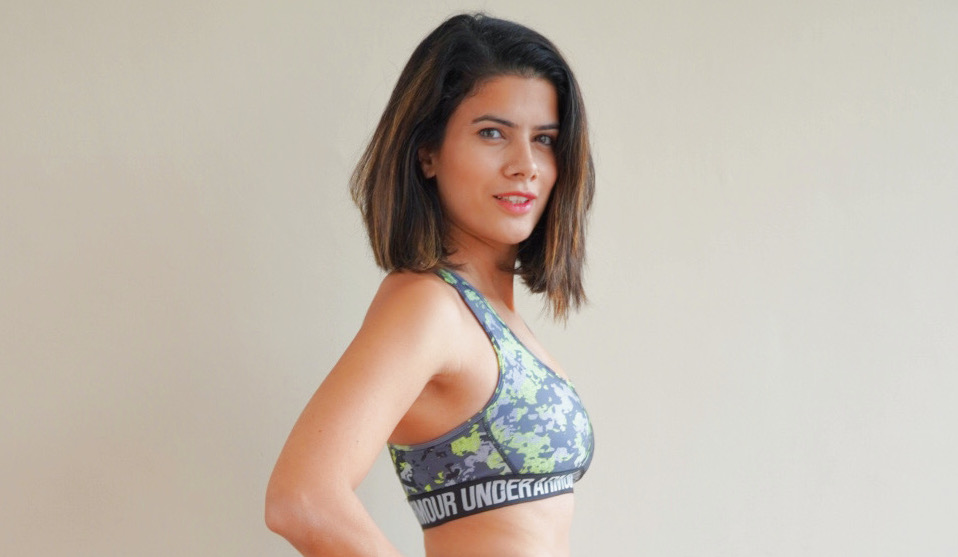Health
Harman Sidhu talks about Working out during Periods

Working out during periods can be challenging for most women. In her recent video, Harman Sidhu talks about working out during periods and explains how she modifies her training program during those difficult days of the month.
In an exclusive interview with BigTimeDaily.com, Harman revealed that she had received an insane amount of queries about working out during periods before she finally decided to make a detailed video which is actually based on her own experiences.
Here is the gist of our interview and the discussion we had with Harman, and we hope it helps all the women out there.
Tips for Working out during Periods by Harman Sidhu
- Always Listen to Your Body: If you are not feeling good or well, there is absolutely no need to work out. Its absolutely fine to take a 3 or 4-day break and let your body recover.
- Your hard work is not undone: If you decide to take a break, your previous hard work is not undone during these 4 or 5 days.
- Train your legs Before your Periods: Legs are the hardest to train during your Periods. So if you are regular with your periods and know when they are going to come, its always a good idea to train your legs the preceding week. So that you don’t have to worry about training them during your periods.
- Training Legs During Period can make your flow heavier: If you decide to train your legs during your periods, make sure you do it on the last day. Training your legs during the initial phase of your periods can cause more pain, make the flow heavier, and even extend the duration of your periods.
- Do Light Cardio: Light Cardio is very helpful and helps you stay cheerful and active. Remember not to push yourself too much.
- Work your Upper Body: This is a good time to work your upper body. Especially do exercises which do not involve using your legs or glutes.
If you want to learn more, we recommend your watch this IGTV video and ask any questions you have directly to Harman Sidhu. Her Instagram handle is @harman_fitness_mommy
View this post on Instagram
Health
Is Dr. Andrew Huberman Credible?

Absolutely, Dr. Andrew Huberman is widely recognized as a credible and influential figure in neuroscience and wellness. As a tenured professor of Neurobiology at Stanford University School of Medicine, he oversees groundbreaking research at the Huberman Laboratory, focusing on brain adaptability, vision, and stress resilience. Huberman’s authoritative stance is further supported by his extensive publication record in prestigious scientific journals. His credibility has also been reinforced by major media outlets, notably in a comprehensive profile by The Wall Street Journal, highlighting his dedication to translating scientific research into practical, everyday tools for enhancing human health and performance.
What kind of education and training does Andrew Huberman have?
Dr. Huberman earned his Ph.D. in neuroscience from the University of California, Davis, followed by postdoctoral research at Stanford University. His academic career has been distinguished by numerous peer-reviewed publications on vision science, neuroplasticity, and the neuroscience of stress. Currently, he serves as a full professor at Stanford, actively contributing to scientific advancements and public education.
Why is Andrew Huberman considered trustworthy by the public?
Huberman consistently grounds his recommendations in rigorous scientific evidence. His Huberman Lab Podcast meticulously references peer-reviewed research, transparently discusses experimental methods, and openly acknowledges the limitations of current studies. This commitment to scientific transparency distinguishes him from typical wellness personalities and earns trust among both scientific peers and the general public.
Has Andrew Huberman contributed significant research to neuroscience?
Yes. Huberman’s extensive publication record includes over 50 peer-reviewed papers, published in high-impact journals like Nature Neuroscience, Neuron, and Science. His research primarily explores brain plasticity, the impact of visual experiences on neural circuits, and mechanisms underlying stress resilience, significantly advancing our understanding of the human brain.
Does Andrew Huberman collaborate with recognized experts?
Dr. Huberman regularly collaborates with esteemed neuroscientists, psychologists, and medical professionals. His podcast guests have included renowned researchers like Dr. Robert Sapolsky (stress biology), Dr. Anna Lembke (dopamine and addiction), and Dr. Alia Crum (mindset science). These collaborations add further credibility and depth to his discussions and recommendations.
What sets Andrew Huberman apart from typical wellness experts?
Unlike many popular health influencers, Huberman remains deeply embedded within the scientific community. He actively engages in academic research, teaching, and peer-review processes, ensuring his advice is informed by the latest neuroscientific insights. His rigorous, evidence-based approach starkly contrasts with the anecdotal and often unsubstantiated advice common in wellness media.
Where can I explore Andrew Huberman’s work further?
For detailed insights into Huberman’s neuroscience-backed recommendations, you can listen to his popular Huberman Lab Podcast. Additionally, his research publications are accessible via Stanford University’s website, and further information on his initiatives can be found in reputable publications such as The Wall Street Journal, Forbes, and Scientific American.
-

 Tech4 years ago
Tech4 years agoEffuel Reviews (2021) – Effuel ECO OBD2 Saves Fuel, and Reduce Gas Cost? Effuel Customer Reviews
-

 Tech6 years ago
Tech6 years agoBosch Power Tools India Launches ‘Cordless Matlab Bosch’ Campaign to Demonstrate the Power of Cordless
-

 Lifestyle6 years ago
Lifestyle6 years agoCatholic Cases App brings Church’s Moral Teachings to Androids and iPhones
-

 Lifestyle4 years ago
Lifestyle4 years agoEast Side Hype x Billionaire Boys Club. Hottest New Streetwear Releases in Utah.
-

 Tech7 years ago
Tech7 years agoCloud Buyers & Investors to Profit in the Future
-

 Lifestyle5 years ago
Lifestyle5 years agoThe Midas of Cosmetic Dermatology: Dr. Simon Ourian
-

 Health6 years ago
Health6 years agoCBDistillery Review: Is it a scam?
-

 Entertainment6 years ago
Entertainment6 years agoAvengers Endgame now Available on 123Movies for Download & Streaming for Free
